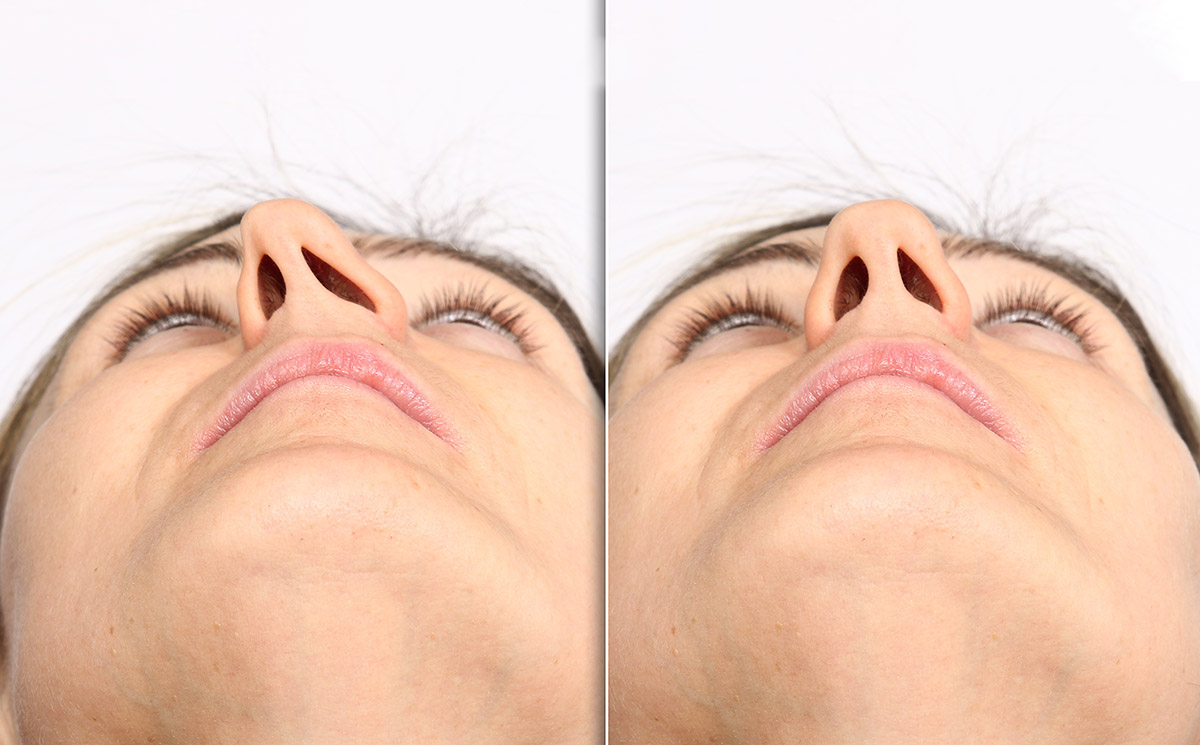
Understanding Deviated Septum: Causes, Symptoms, and Diagnosis

What is a Deviated Septum?
A deviated septum displaces the nasal septum, the cartilage dividing the nose into left and right chambers. When this septum shifts away from the midline, it causes congestion and breathing difficulty in the smaller chamber. Meanwhile, the larger chamber can suffer from drying, leading to crusting or bleeding.
Common Causes of Deviated Septum
Most people have deviated septums that cause no to minor symptoms. However, there are causes of deviated septums that can cause significant symptoms:
- Congenital Factors: Some deviated septums are present from birth and may result from genetic factors.
- Nose Injuries: Trauma or injury to the nose can displace the nasal septum, causing deviation.
- Aging: As individuals age, the nasal septum can naturally grow asymmetrically, leading to a deviated septum that may worsen over time.
Recognizing Deviated Septum Symptoms
A deviated septum can have severe symptoms affecting a person’s everyday life.
- Nasal Drying and Nosebleeds: A widened nasal chamber due to the deviation can cause nasal drying, leading to nosebleeds.
- Nasal Congestion: The narrower nasal passage resulting from a deviated septum can cause:
- Recurring sinus infections or sinusitis
- Sinus pressure
- Headaches
- Facial pain
- Noisy breathing
- Snoring
- Sleep apnea or breathing difficulties during sleep
- Difficulty breathing, potentially leading to chronic mouth breathing
- Consult a Doctor if Symptoms Persist:
- Chronic nasal congestion
- Recurrent sinus infections
- Frequent nosebleeds
Diagnosing a Deviated Septum
To diagnose if a person has a deviated septum, your healthcare provider will do the following procedures:
- Medical History Documentation: Your healthcare provider will inquire about your medical history, specifically any prior nose injuries and the symptoms you’ve been experiencing.
- Physical Examination: They’ll conduct a detailed examination of the outside and inside of your nose using a bright light and a nasal speculum to widen the nostrils for a closer look.
- Nasal Endoscopy: In some cases, a nasal endoscopy may be conducted. This procedure involves:
- CT Scan: A CT scan may be recommended to assess the severity of the deviated septum and related symptoms through detailed imaging.
How Sinus Surgery Can Help Correct a Deviated Septum
When medical therapy does not alleviate the symptoms you’re experiencing, surgery to correct the deviated septum can be recommended.
Septoplasty involves repositioning and aligning the nasal septum to the center of the nose and improving nasal airflow. Sometimes, a surgeon may recommend sinus surgery to minimize sinus infections or rhinoplasty to reshape the nose.
Post-Operative Care Following Nasal Surgery: Essential Steps for Recovery
After nasal surgery, here’s what you should keep in mind for post-operative care:
- Immediate Post-Surgery: The anesthesia effects will wear off after about 24 hours. During this time, avoid driving, drinking alcohol, or making important decisions.
- Cleaning and Hygiene: For the First 24 hours, avoiding showering or bathing is best. Instead, your healthcare provider will demonstrate how to clean the nose area using Q-tips and a specific cleaning solution.
- Managing Pain and Swelling: Post-surgery, you might experience pain, bruising, and swelling in your face and nose. Ensure you’ve filled out any prescribed pain medication. Ice packs (covered to prevent moisture) can help reduce pain and swelling. Sleeping with your head elevated on two pillows can also aid in minimizing swelling.
- Rest and Avoidance of Pressure: Rest is crucial for the first 24 hours after surgery. Avoid putting pressure on your nose, so avoid touching or blowing it. Activities that strain your face, such as heavy lifting, should be avoided for two weeks. Depending on your doctor’s recommendations, returning to work might be feasible after a week.
- Removal of Packing and Splints: Typically, nasal packing is removed 24-36 hours after surgery, while splints come off after 1-2 weeks.
If you experience worsening symptoms, please call your doctor:
- Heavy nosebleeds
- Worsening pain
- Difficulty breathing
- High fever
- Headaches
- Neck stiffness
Prognosis
Regarding the prognosis after surgery, some people’s septum will deviate due to age or preexisting conditions. When that happens, another septoplasty is performed by their healthcare providers.
Most people who underwent septoplasty report relief of their symptoms. With better nasal health comes a better quality of life. People experience breathing improvement and sleep quality. Sinus surgery also alleviates chronic sinusitis, positively impacting people’s daily activities and well-being.
To learn more about Sinus Surgeries click the link below for more information.